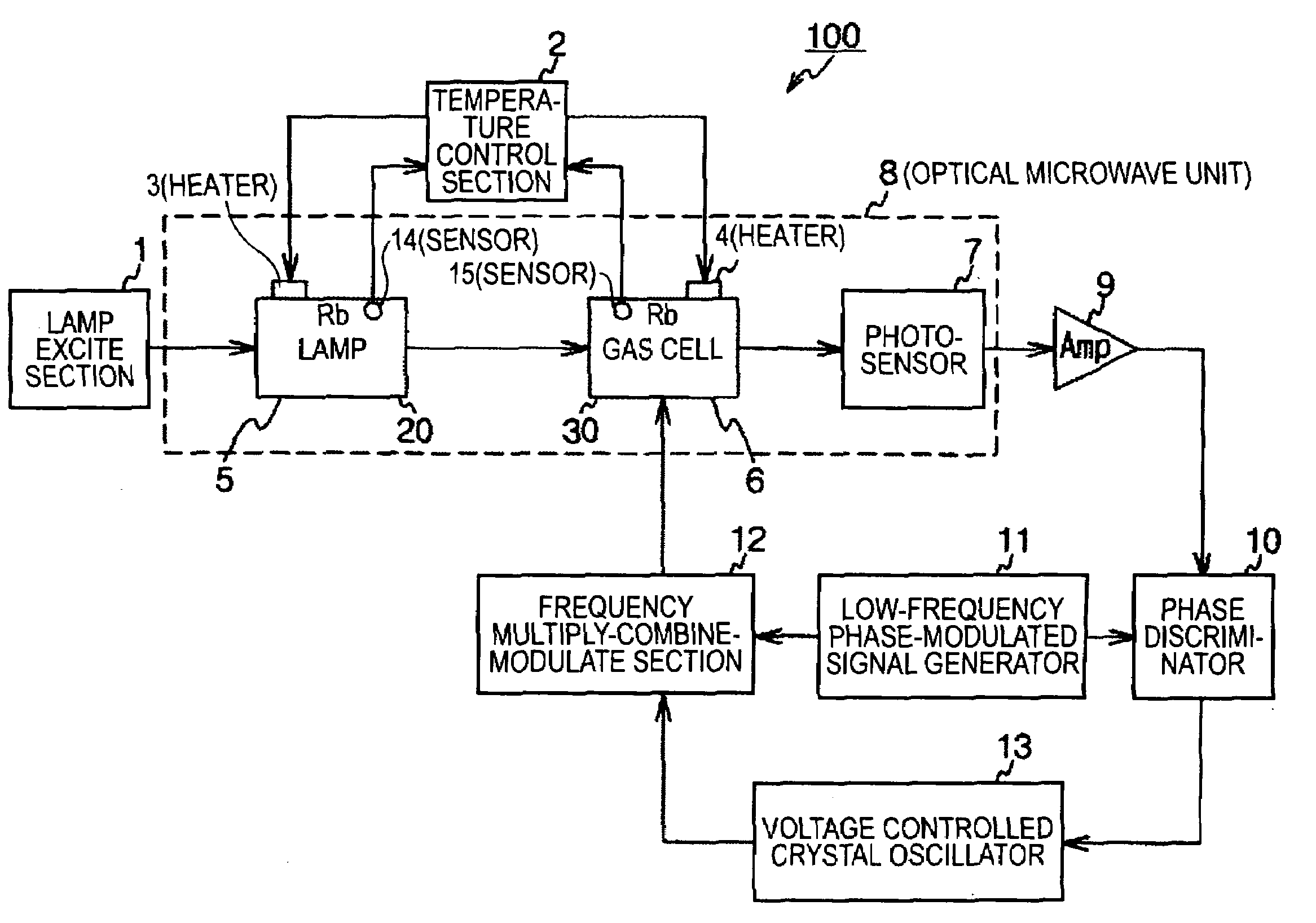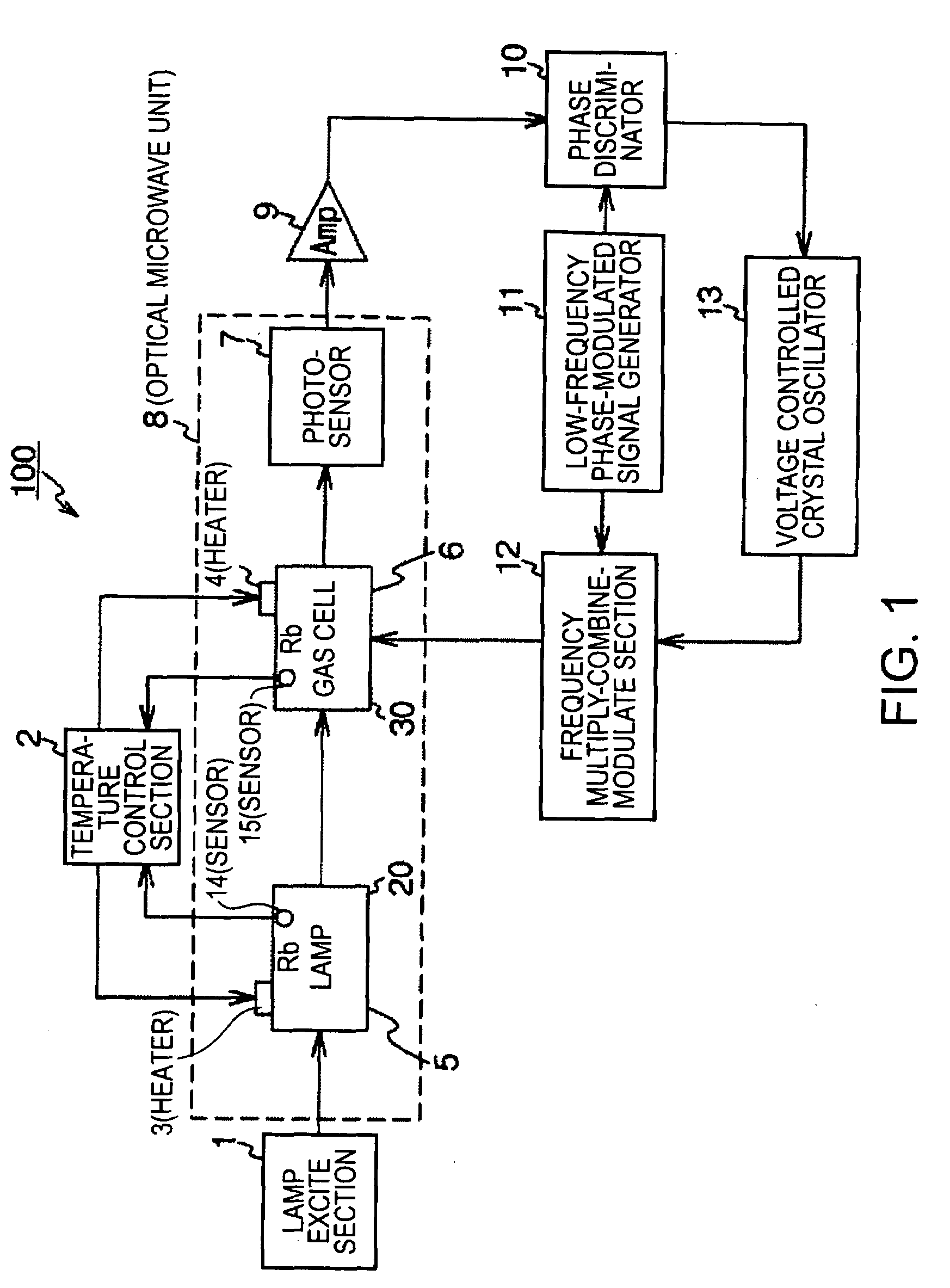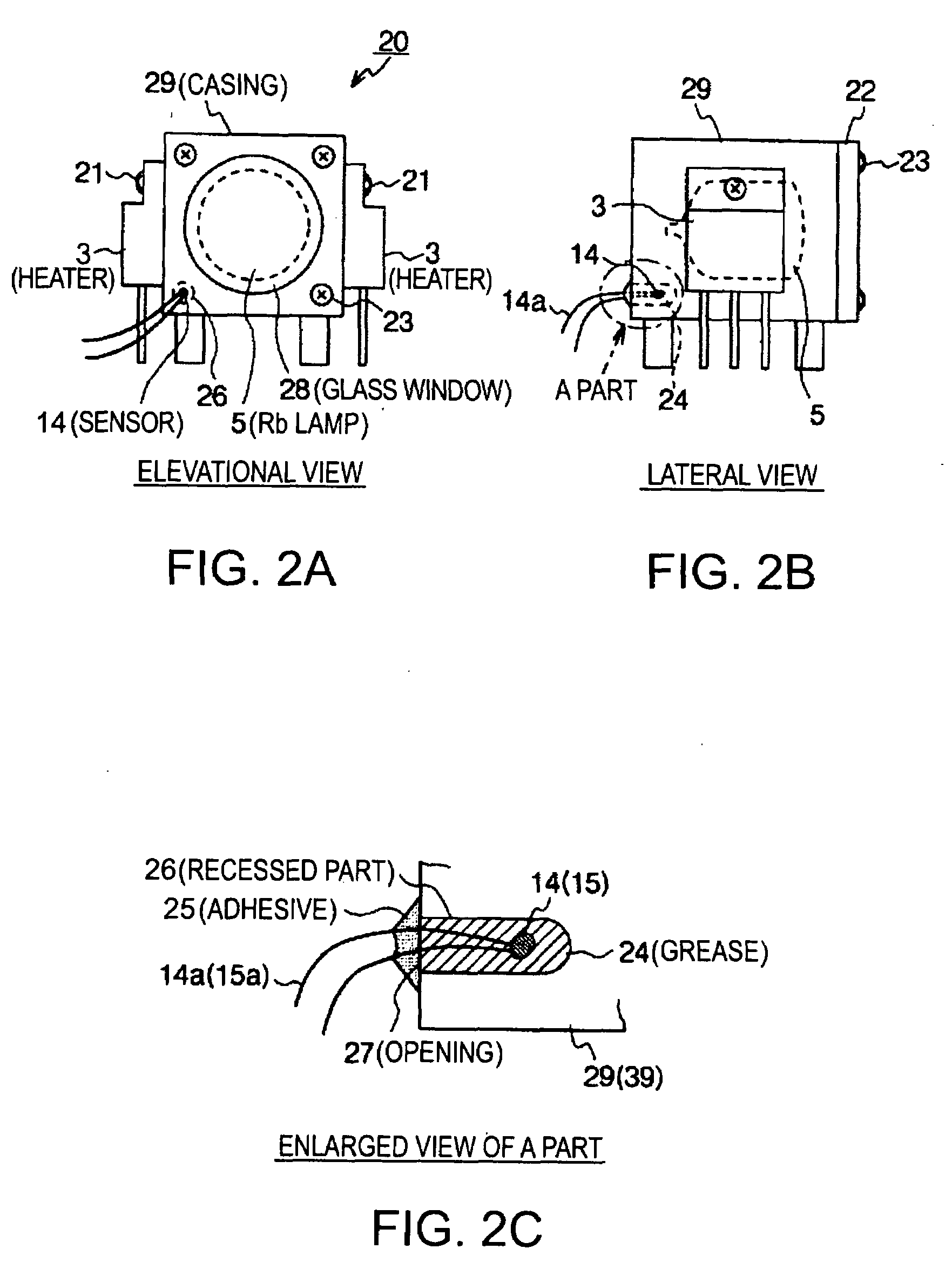Atomic oscillator, method for sealing temperature detecting means, and rubidium atomic oscillator
a technology of atomic oscillators and temperature sensors, which is applied in the direction of electrical heating, automatic control, electrical equipment, etc., can solve the problems of disadvantageous inability to check with eyes from the opening side, the complexity of the temperature sensor, and the increase in cost etc., to achieve the effect of simplifying the structure improving the sensitivity of the temperature sensor, and realizing the cost effectively
- Summary
- Abstract
- Description
- Claims
- Application Information
AI Technical Summary
Benefits of technology
Problems solved by technology
Method used
Image
Examples
first embodiment
[0044]FIGS. 2A to 2C are schematic views showing a lamp thermal cylinder according to a first embodiment of the invention. Elements same as the ones in FIG. 1 are given the same reference numbers to be explained. FIG. 2A is an elevational view, FIG. 2B is a lateral view, and FIG. 2C is an enlarged view of A part of FIG. 2B. This lamp thermal cylinder 20 is provided with a casing 29 made of metal and having a cylindrical structure so as to house the Rb lamp 5 therein; a recessed part 26 provided on part of the surface of the casing 29; the temperature sensor 14 disposed in the recessed part 26; and grease 24 filling the recessed part 26 so as to cover and bury the temperature sensor 14. The recessed part 26 is formed in a bag shape from an opening 27 provided on the surface of the casing 29 toward the inside of the casing 29.
[0045]Further, on the elevational face of the casing 29, a lid 22 protecting the Rb lamp 5 is fixed by a screw 23, and to the lid 22, a glass window 28 for extra...
second embodiment
[0059]FIG. 4 is a schematic view showing a recessed part sealed with a sealing member according to a second embodiment of the invention. Elements same as the ones in FIG. 2C are given the same reference numbers to be explained. The sealing member prevents the grease 24 from leaking to the outside. Therefore, a lid member 36 fitting the opening 27 of the recessed part 26 may be prepared so as to seal the grease 24 filling the recessed part 26. In the case, the lid member 36 is preferably made of high thermal conductive material. In addition, the gas cell thermal cylinder 30 reaches extremely high temperature. Therefore, the lid member 36 sealing the grease 24 needs to have at least thermal resistance so as not to transform or melt due to the heat.
[0060]FIG. 5 is a schematic diagram showing a common concept of negative feedback. Note that each element has a different reference number from the one in the above embodiments. A thermostat part of a rubidium atomic oscillator of the invent...
PUM
 Login to View More
Login to View More Abstract
Description
Claims
Application Information
 Login to View More
Login to View More - R&D
- Intellectual Property
- Life Sciences
- Materials
- Tech Scout
- Unparalleled Data Quality
- Higher Quality Content
- 60% Fewer Hallucinations
Browse by: Latest US Patents, China's latest patents, Technical Efficacy Thesaurus, Application Domain, Technology Topic, Popular Technical Reports.
© 2025 PatSnap. All rights reserved.Legal|Privacy policy|Modern Slavery Act Transparency Statement|Sitemap|About US| Contact US: help@patsnap.com



